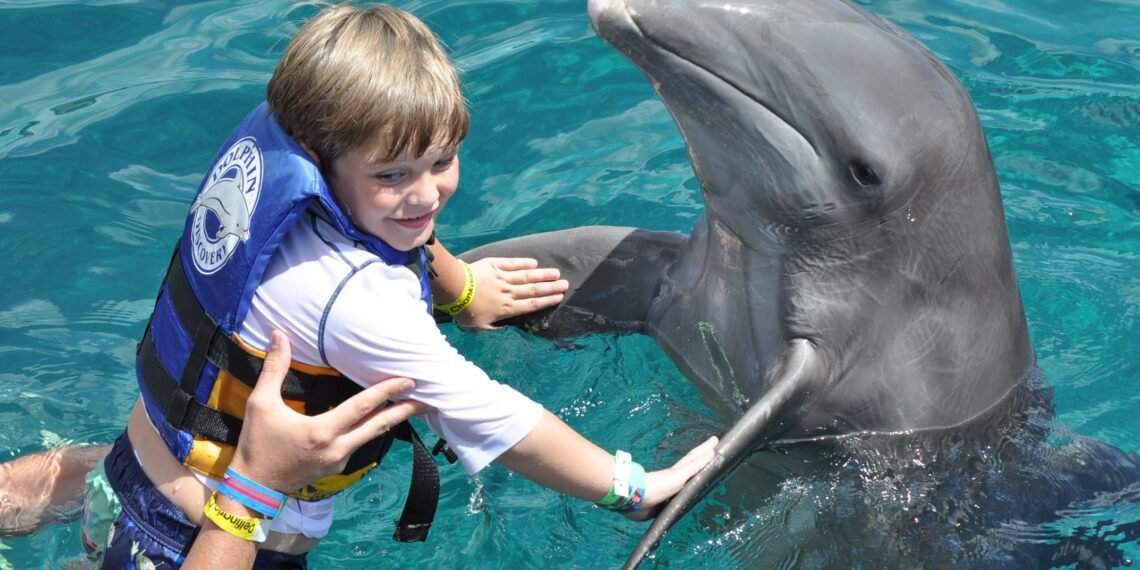The Gangetic dolphin or Platanista gangetica is an iconic creature in India’s ecological as well as cultural identity. As India’s National Aquatic Animal since 2009, it is an indicator of the healthiness in river ecosystems and an essential pointer towards freshwater biodiversity. However, in spite of its significance, its endangered population is exposed further to threats such as pollution, dwindling habitats, accidental entanglements in fishing nets, poaching, as well as construction of dams. Worryingly, its population decreased significantly over the decades such that its continued existence is a cause for concern.
To respond, the government launched a new initiative called “Dolphin Friends”—an initiative meant to involve citizens actively in safeguarding such great creatures. Unlike common conservation strategies which are mostly top-down in nature, this initiative puts communities at large, especially those living around the Ganga river, at the leading edge. By involving school children, boatmen, and locals, the initiative aims at generating a group of defenders who will monitor dolphin populations in real time and report threats.
Why Does the Gangetic Dolphin Matter?
It is not only any other species but also holds a key position in keeping a river’s ecosystem in balance. As an apex predator in the aquatic food chain of a fresh-waterbody, it controls a population of fish which further impacts people living in a catchment-dependent economy based on fishing. Also, its presence is indicative of a river’s health in general. A river which is capable of holding dolphins is capable of holding human life as well.
Besides ecology, there is a strong hold of the dolphin in India’s cultural consciousness as well. It is referred to locally as a “Susu” and a part of folklore and traditions for several hundred years. Its conservation is not just about a species but saving a piece of cultural heritage.
The “Dolphin Friends” Project
The program is currently accepting applications until August 29 for volunteers. Its area of focus is community-conservation. Volunteers would be trained to:
Track populations of dolphins based on their occurrence and migration.
Report any threats such as unlicensed fishing activity, pollution points, or accidental deaths.
Increase awareness in their communities about why preserving river ecosystems is essential.
Advance clean-river practices for dual gains for both people’s livelihood and for biodiversity.
Engaging boatmen, fishermen, and local children ensures that those closest to the river become its most ardent defenders as well. These stakeholders are usually the first in line to detect shifts in water purity, availability of fish, and dolphin presence—making their contribution irreplaceable.
Wider Implications
The project goes beyond a simple dolphin rescue mission. Through awareness creation and conservation, it directly contributes to the Namami Gange Programme for cleansing and revitalization of the Ganga. Dolphin protection goes hand in hand with further objectives such as minimizing river pollution, enhancing sewage treatment, and encouraging sustainable fishing habits.
Moreover, dolphin conservation is tied in directly with sustainable development. Healthy rivers mean better fishing, clearer drinking water, and improved economic futures for those people living in the banks of the rivers. Conservation of dolphins thus becomes an integrated mission for humans and nature.
Motherhood Fever
Though the project is encouraging, it is marred by a number of problems. Untreated sewage, industrial effluents, and plastic pollution still pose a major threat. Moreover, fragmentation caused by dams and barrages disturbs their free flow and separates dolphin populations further reducing their breeding grounds. Conservation initiatives might not prove effective until such structural problems are eliminated.
But its program “Dolphin Friends” holds out hope by bridging government support with community efforts. It understands an effective conservation is only effective when people take a sense of ownership and responsibility towards natural resources.
A Call for Action
Each one of us needs to contribute our share towards keeping the Gangetic dolphin alive. As a student, it is a learning experience about biodiversity and taking pride in conserving it. As boatmen or fishermen, it is a chance for reconciling livelihood with sustainability. As citizens in urban India, showing our support for policies making our lakes clean and reducing pollution indirectly helps in safeguarding the dolphin. Survival of Gangetic dolphins is a challenge for India towards environmental responsibility.
The “Dolphin Friends” program is not only about rescuing an animal, it is about securing a shared future for humans and nature. By coming together today, we can guarantee that such graceful river dolphins remain in the Ganga for generations ahead.The Gangetic dolphin or Platanista gangetica is an iconic creature in India’s ecological as well as cultural identity. As India’s National Aquatic Animal since 2009, it is an indicator of the healthiness in river ecosystems and an essential pointer towards freshwater biodiversity. However, in spite of its significance, its endangered population is exposed further to threats such as pollution, dwindling habitats, accidental entanglements in fishing nets, poaching, as well as construction of dams. Worryingly, its population decreased significantly over the decades such that its continued existence is a cause for concern.
To respond, the government launched a new initiative called “Dolphin Friends”—an initiative meant to involve citizens actively in safeguarding such great creatures. Unlike common conservation strategies which are mostly top-down in nature, this initiative puts communities at large, especially those living around the Ganga river, at the leading edge. By involving school children, boatmen, and locals, the initiative aims at generating a group of defenders who will monitor dolphin populations in real time and report threats.








